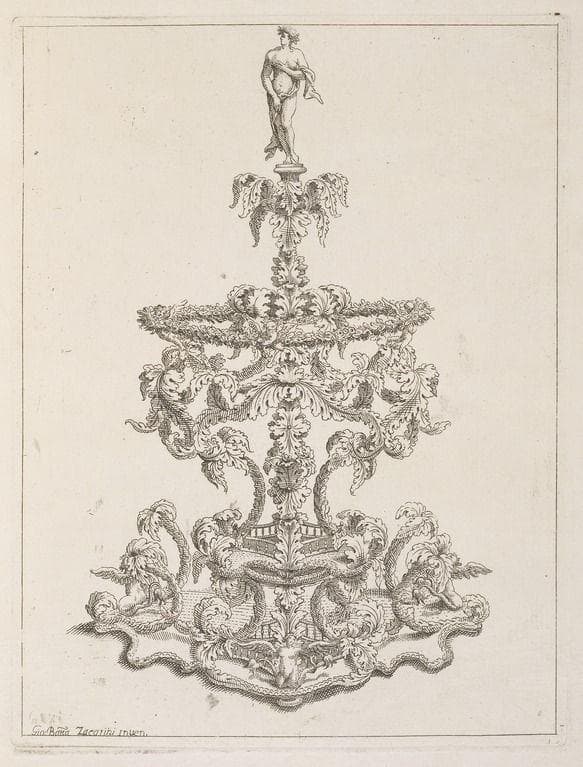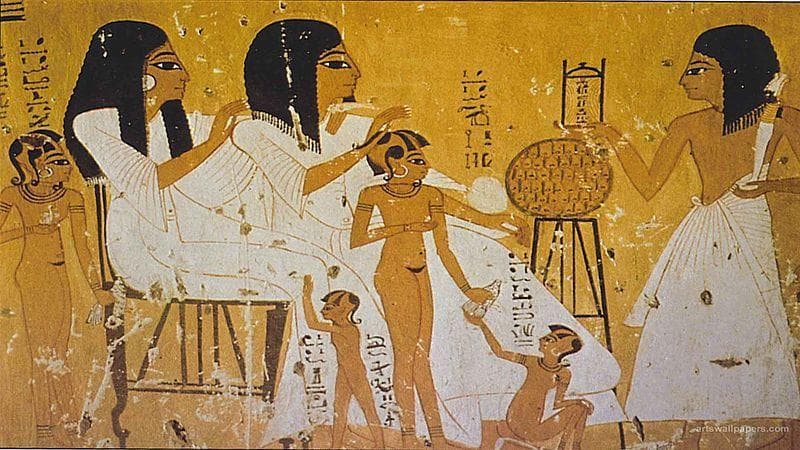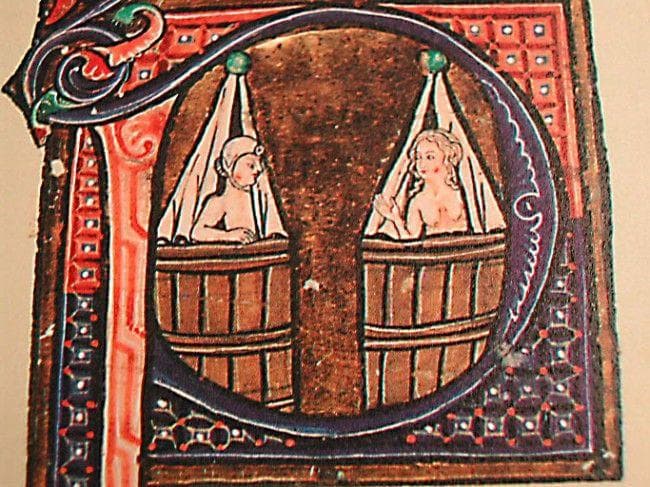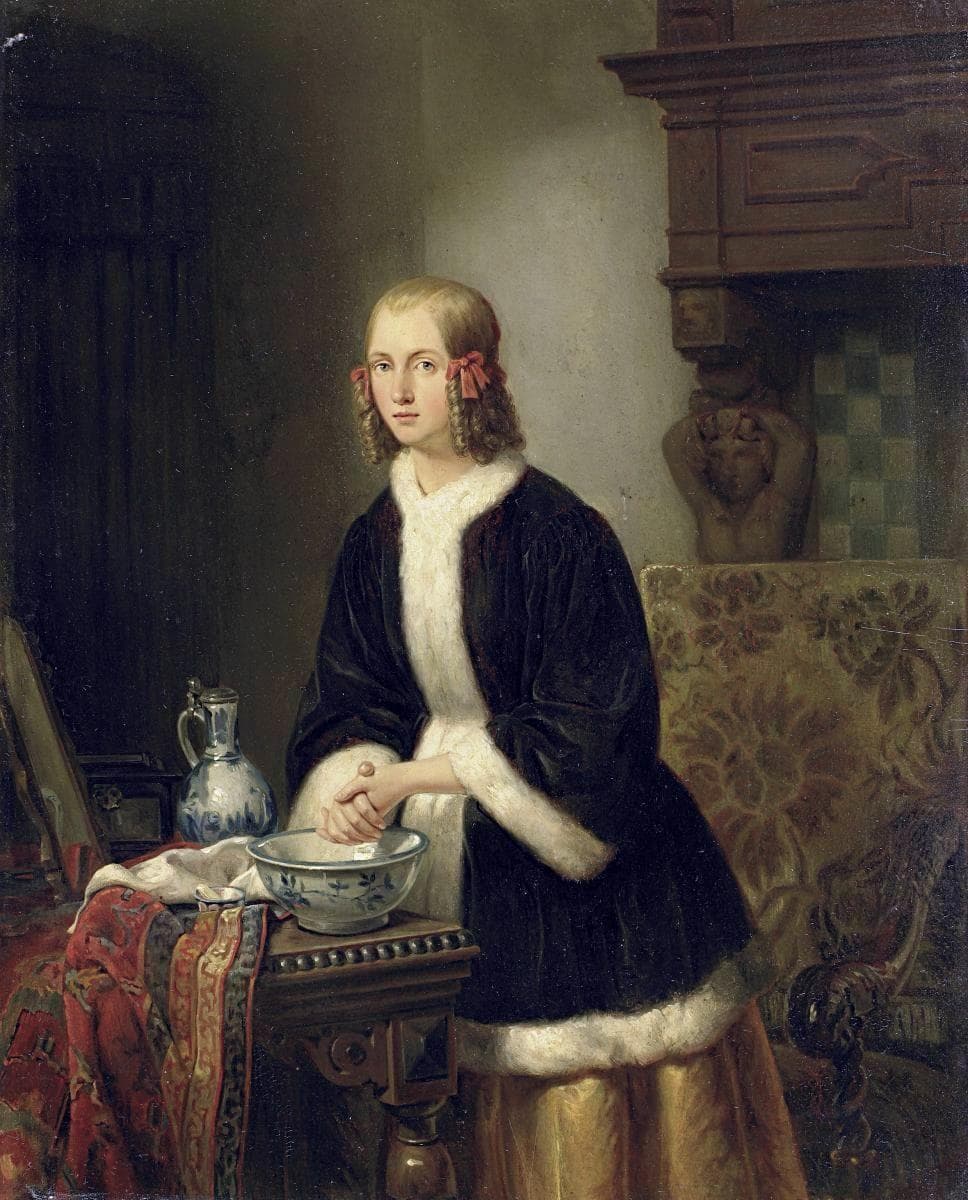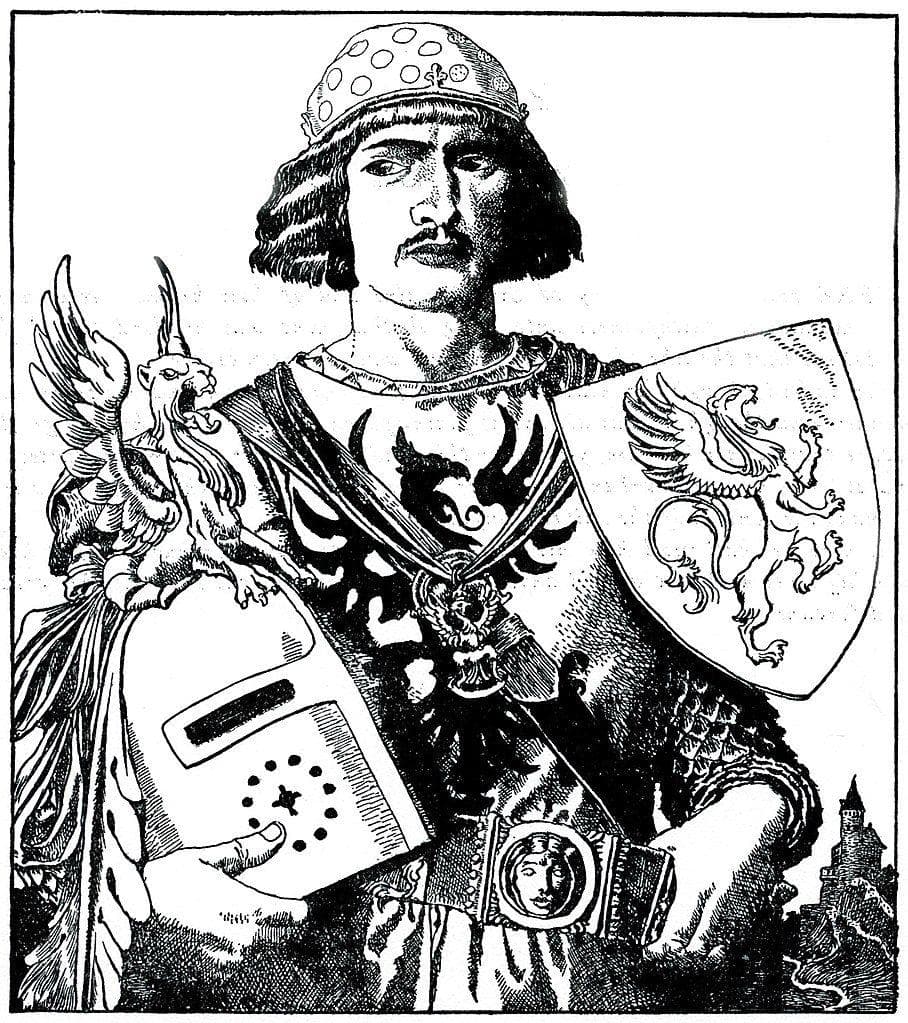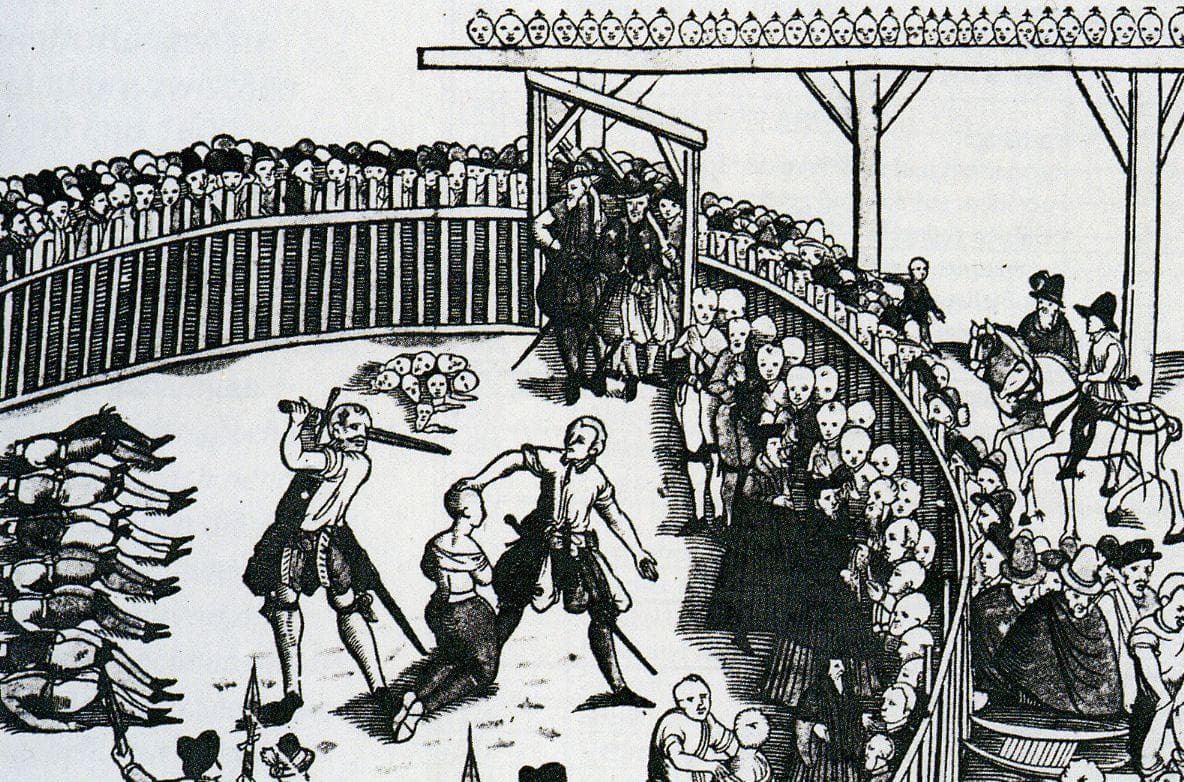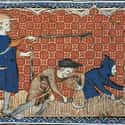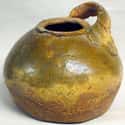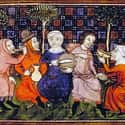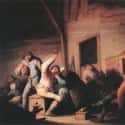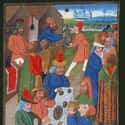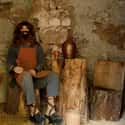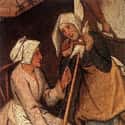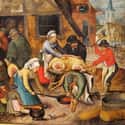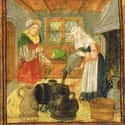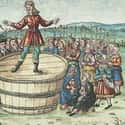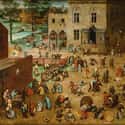-
(#1) Most Peasants Rarely Bathed - Others Never Did
While many upper-class people could bathe in tubs with hot water, and many of the middle-class folk made use of public baths, peasants had to make do with much less. Since there was no running water, and peasants had to haul water from wells or rivers to their homes by hand, bathing required a lot of labor. Many people had to bathe with a small amount of water, and it was often unheated.
Those who didn't have a suitable area in their homes bathed outdoors. Since many peasants performed manual labor all day, bathing helped remove dirt and stinky sweat - and it also helped them avoid lice and fleas. They didn't always use soap, but when they did, it often consisted of an alkaline solution, such as a mixture of salt and lime. Since bathing required so much work, some peasants decided not to wash themselves at all. These people were relatively rare, however; most peasants found time to bathe, even if it didn't happen frequently.
-
(#2) Running Water Was Rare Among Medieval People, So Peasants Used Outhouses Or Chamberpots
People living in castles used toilets consisting of a bench with a hole placed over an opening leading to a cesspit; peasants did not have this luxury. Instead, the lower classes made use of outhouses and often had to share them with the community. Those who did not have outhouse access used chamberpots. If they could not afford such things, they used waste buckets. People then emptied their chamberpots and waste buckets into nearby cesspits or into the river. Instead of toilet paper, they used straw, grass, moss, or hay to wipe themselves.
Before modern ideas of sanitation, some people believed the smell of waste caused disease, not the waste itself. Historians believe that, in order to get rid of the smell from indoor chamberpots, some people dumped their contents out the window or into the street. Dumping chamberpots outside the house, as well as people relieving themselves in public, was frowned upon by society, and regulations were created against such practices. People occasionally disregarded the rules, however, causing streets to become filthy and the water supply to be contaminated after rainstorms.
-
(#3) Those Who Could Afford More Than One Pair Of Clothes Did Laundry Once A Week
Although people in medieval times dressed in layers in order to avoid washing outer garments too often, peasants often owned just one set of clothing. Clothing worn next to the skin was made of linen, and heavier wool garments were worn on top of the undergarments. People understood that washing their clothing helped keep parasites away, and etiquette books advised changing one's underwear every day. For peasants, however, that often wasn't an option. Those who could afford more than one set of clothing changed into fresh garments once each week while washing their other clothing.
Many peasants slept unclothed at night when the weather permitted, meaning they needed even less clothing. Peasants who couldn't afford to send their garments to a professional laundress did their laundry themselves, washing their clothing in the river, typically with lye soap. Unfortunately, medieval rivers were often poluted with human waste, garbage, and runoff from animals' waste in the streets.
-
(#4) Peasants Regularly Deloused One Another
For medieval people, especially peasants, dealing with fleas and lice was a fact of life. Parasites were such a problem that comb-makers began adding finer teeth so users could remove dirt and lice while combing their hair. People often used their fingers to do the same job and would get together to delouse one another. As strange as it sounds, delousing groups formed a social activity for peasants.
Lice didn't limit themselves to hair, however, and clothing had to be deloused, as well. Women skilled at delousing clothing and hair were in such demand that members of the Third Crusade took them along on their journey.
-
(#5) Communal Cesspits Held The Waste From Chamberpots And Outhouses
Whether it was originally deposited in an outhouse or a chamberpot, the waste of peasants eventually wound up in cesspits. Sometimes, many people shared the same toilet or set up a number of outhouses to empty into a communal cesspit. In addition to waste, people also dumped their garbage into the pits, adding to the stench. Some unlucky laborer had the job of emptying these cesspits, but they often leaked and contaminated the groundwater and soil.
Contamination may have also traveled to rivers that provided water for drinking, bathing, and laundry. Regulations required that cesspits be located a certain distance from people's homes, but that did not save people from the smell. Stinky waste-filled holes; widespread disregard for requirements to dump chamberpots out windows; the waste of horses and farm animals passing through town; and the rats, mice, and other vermin attracted to the mess combined to make staying clean in medieval times a real challenge.
-
(#6) Peasants Commonly Washed Their Hands And Faces In The Morning
Although it was difficult, peasants in medieval times liked to keep themselves as clean as they could. Not only was keeping oneself clean a sign of pride, many considered it common etiquette.
Popular etiquette especially advised people to wash their face and hands after waking up, and to continue the practice of handwashing throughout the day. Even peasants could do so, as it didn't require much water - which they would have had to collect through hard labor by carrying to their homes. Since peasants didn't have utensils and instead ate with their hands, washing hands before and after a meal was especially important.
-
(#7) Peasants Slept On Straw That Attracted Fleas And Vermin
Many medieval peasants slept on beds made of straw, as they were relatively comfortable and provided insulation. Although peasants sometimes changed the straw inside their mattresses, many didn't change it frequently enough, and bugs and vermin attracted to the straw stuck around for long periods of time.
Peasants with these kinds of mattresses frequently suffered from bedbugs, fleas, lice, and rats infesting the straw. In order to combat this, people mixed scented flowers and herbs - such as mint, chamomile, and lavender - in with the straw. If they could afford it, peasants also had linen sheets and woolen blankets to cover themselves as they slept.
-
(#8) Women Used Rags, Moss, Or Twigs As Menstruation Pads
Although not much is known about the topic, historians believed women resorted to using a variety of items to collect blood during their periods. Many women probably used pieces of rags they tore up. Other theories suggest some women wrapped strips of cloth around a small twig and used it as a tampon, or possibly collected absorbant moss and used it as a pad. It's also very likely some women did nothing and simply bled on their clothing.
Religious authorities placed shame on menstruation, and many women felt they had to disguise it. They may have carried scented herbs or flowers with them to mask any smell. But considering medieval women didn't live long, and many peasant women lived hard lives involving heavy labor and little sustenance, it's entirely possible that women had fewer periods during their short lives than women do in modern times.
-
(#9) Peasants Used Twigs To Clean Their Teeth
In the absence of toothbrushes, peasants used twigs to clean their teeth. They especially enjoyed using small branches from hazel trees. Some people also rubbed a piece of wool over their teeth and rinsed their mouth with water. Those who could afford it mixed things like salt and sage together to form a paste to freshen breath and whiten teeth.
Because their diet included virtually no sugar due to their limited finances, peasants didn't suffer from many cavities. The stone-ground bread they ate, however, caused their teeth to wear down. If a peasant's dental hygiene wasn't enough and they developed a problem with a tooth, they would have to have it removed. Instead of a dentist, barbers performed most dental work; since there was no anesthesia available, patients resorted to getting drunk before having their teeth worked on.
-
(#10) Women Were In Charge Of Keeping The Home Clean
Peasant women in medieval times ran the household, in addition to preparing food, milking cows, tending to the garden, and fetching water. Daily or weekly duties may have included churning butter, baking bread, and milling grain. Expectations of the time also gave women the responsibility of keeping the home clean, as well as their husbands' clothing. They were expected to remove fleas from their bedroom and bed.
Etiquette and advice books suggested women use white sheets so bugs and parasites could be easily spotted. Some women placed alder leaves around the room to deter parasites from gathering. Because towns expected people to keep the areas outside their homes clean, women most likely picked up this task, as well.
-
(#11) People Used Wine As An Antiseptic
With no schooling and few chances to learn, peasants carried superstitions for decades. As the influence of the church spread, people turned to prayer in order to cure their ailments. Eventually, education spread across Europe and information about science and medicine helped doctors become more proficient.
A few of the ideas medieval citizens discovered even led to modern medicine. They created hospitals, performed surgery, and experimented with different antiseptics. Surgeons discovered wine could be used to clean wounds, and learned they could close lacerations with cauterization. Despite these advances, doctors never realized the connection between infection and hygiene, and many people perished as a result.
-
(#12) People Ate With Their Hands And Ate Food Made With Contaminated Water
The diet of medieval peasants consisted mostly of what they could grow on their farms: beans, grains, vegetables, and onions. Depending on how closely a peasant lived to a cesspit or contaminated water source, the soil used to grow food and the water used to prepare meals could be tainted with human or animal waste. With no refrigeration, fresh vegetables were an impossibility in winter and the grains and root vegetables they stored could rot or become infested with vermin. Fungi could poison grains if people weren't careful, and people could suffer bouts of stomach distress, diarrhea, or other sicknesses due to spoiled food.
Meat was a luxury many peasants couldn't afford, but if they managed to earn enough to buy some - or slaughter one of their own animals - they had to dry the meat with salt; otherwise, it would decay. If the weather was poor and crops failed, many peasants simply starved. Because people rarely used cutlery at the time aside from knives, peasants ate with their hands. Although they washed their hands before and after every meal to maintain etiquette, dirt trapped under fingernails or a poor handwashing job could lead to contamination, as well.
-
(#13) Lack Of Knowledge About Why People Get Sick Often Made Hygiene Ineffective
Doctors in medieval times adopted the theory of humorism and made connections between organs of the body, seasons, elements, and tempers. This led them to believe sickness happened when the body was out of balance. They also thought parasites originated within people's bodies and caused the imbalance to occur. Doctors theorized that controlling one's diet, such as eating less fruit, could help prevent the body from producing lice.
What they didn't realize, however, was that poor waste management and some people's failure to bathe often led parasites to be attracted to people. No matter how many times people washed their hands, the lack of understanding about the connection between filth, infestation, and sickness meant no one was safe from parasites and disease.
-
(#14) Most Peasant Men Didn't Shave
Although peasants did wash their hair occasionally, shaving wasn't as easy. Mirrors at the time were either made of lead-backed glass or polished metal, but it was difficult to see a clear image.
Mirrors were often small, so many men in medieval times went to a barber for their weekly shave. Many peasants couldn't afford to pay someone for a shave and some didn't own mirrors, so many decided not to shave at all.
-
(#15) People Created Recipes For Special Concoctions That Deterred Parasites
Living with parasites was such a common occurrence in medieval times that people tried different herbal remedies to get rid of them. Some used common items peasants might find around their home - i.e. spreading glue on a slice of bread and sticking a candle in the middle to attract the fleas that infested people's beds. Other remedies were not effective, like getting rid of lice nits by washing hair with salt water from the sea or sniffing lavender.
People sometimes tried smoke and steam to get rid of so-called tooth worms and mites. They would burn chamomile seeds and inhale the smoke, or hold infected limbs over steaming water. To get rid of earworms - nonexistent parasites that were widely believed to exist - doctors poured bitter medicine into people's ears. They also used bitter herbs to wipe out parasites elsewhere; however, the herbs caused horrible diarrhea. Medieval people even suffered through toxic remedies, using minerals like mercury. If a patient vomited or suffered a painful bowel movement, doctors interpreted it as the parasites being purged and the person cured.
New Random Displays Display All By Ranking
About This Tool
Many theories said that people in the Middle Ages did not like to take a bath, and even took pride in not taking a bath, the garbage and excrement were dumped casually, and the whole city was full of unpleasant smells. In fact, most wealthy families in the
Middle Ages had the habit of washing their hands before meals, and the excrement of peasants was generally only used to increase the fertility of the land.
Europeans in the Middle Ages have begun to pay attention to personal hygiene habits, and some countries already have developed public water supply and cleaning systems. The random tool described 15 details about the hygiene of Medieval peasants.
Our data comes from Ranker, If you want to participate in the ranking of items displayed on this page, please click here.



